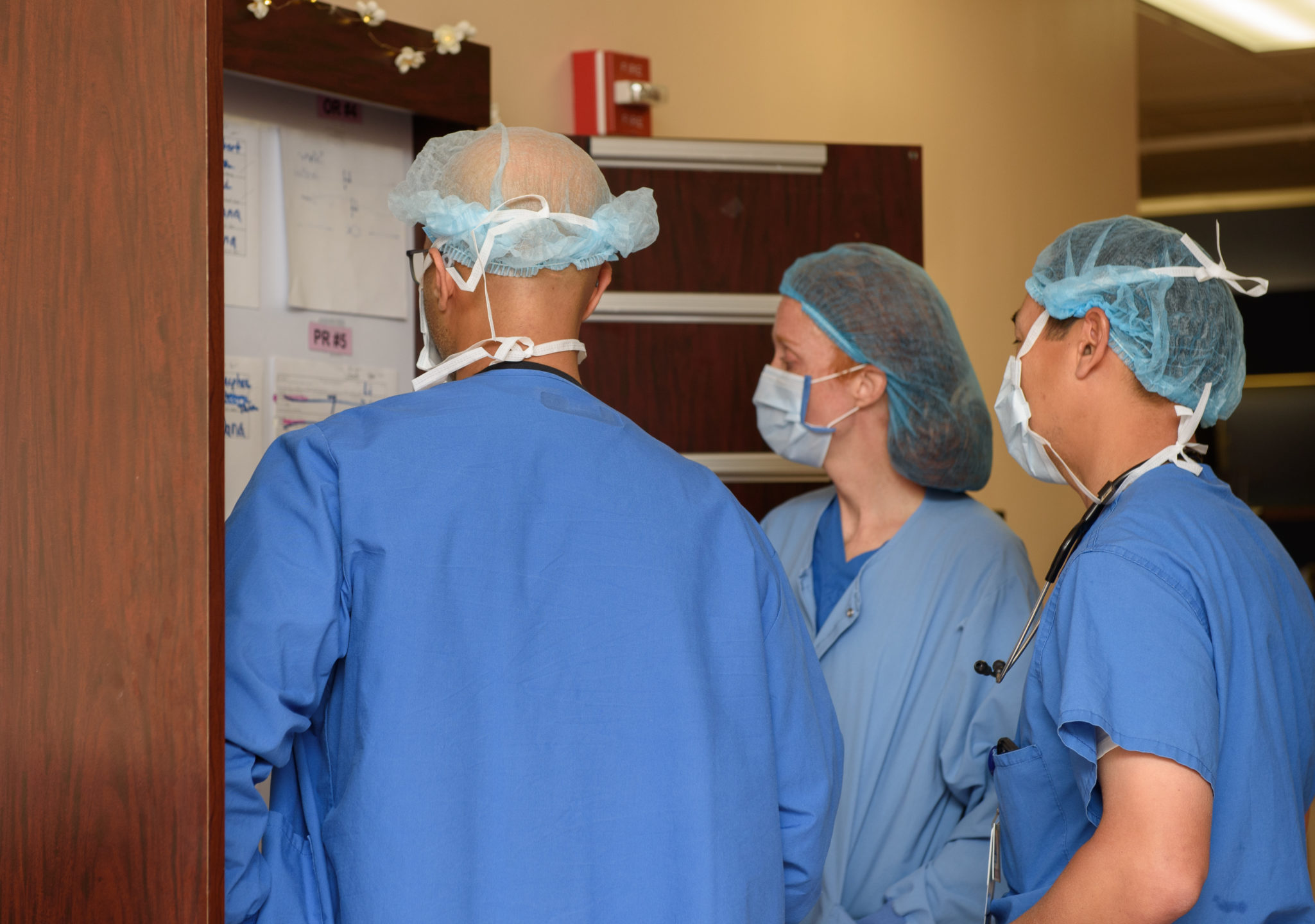Access your own patient portal, provided by NCSH.

SURGERY
Hysterectomy—When It’s Needed and What to Expect
A hysterectomy—the surgical removal of the uterus—is the second-most common surgical procedure in American women of reproductive age. There are many reasons a woman might need a hysterectomy, and it often comes down to a choice made between a patient and her doctor.

If you need this procedure, consult with some of the best hysterectomy surgeons in N.C., who see patients at North Carolina Specialty Hospital in Durham. The gynecologist surgeons on the team are experts in women’s health and can discuss your options and what to expect when undergoing a hysterectomy.
What is a Hysterectomy?
A hysterectomy is a surgery that removes the uterus and typically also the cervix. A surgeon may remove other tissues or structures depending on the patient’s condition and needs. Types of hysterectomy based on the extent of the surgery include:
- Total Hysterectomy. Also known as a simple hysterectomy, this procedure removes the uterus and cervix.
- Partial Hysterectomy. This is the removal of the uterus, leaving the cervix in place.
- Hysterectomy with Bilateral Salpingo-Oophorectomy. This term refers to the removal of the fallopian tubes along with the uterus and cervix.
- Radical Hysterectomy. A radical procedure removes the uterus, cervix, ovaries, and fallopian tubes. It may also include removal of part of the vagina and some lymph nodes.
A hysterectomy is often a last-resort treatment. With a hysteroscopy, a doctor can perform more conservative procedures, such as removing fibroids. They can also take biopsies with the scope to better diagnose the condition and determine if a hysterectomy is appropriate.
Who Needs a Hysterectomy?
A hysterectomy is a surgical treatment for several conditions. These conditions do not always require the procedure. It is often used after non-surgical treatments fail to provide results or if the condition is life-threatening. Women of childbearing years who still want to have children should talk to their doctors and surgeons to determine if surgery is necessary.
Some of the health conditions a hysterectomy can treat include:
- Endometriosis. This is a painful condition that causes the endometrium—the lining of the interior of the uterus—to grow outside of the uterus. The condition can be severe and cause significant pain, scarring, and cysts that may not respond to medications and hormones.
- Fibroids. Fibroids are benign tumors of the uterus. While not cancerous, they can cause bleeding, pain, anemia, and other complications. Non-surgical treatments can help, but a hysterectomy is the only permanent treatment, or cure, for fibroids.
- Cancer. Cancer can occur in the uterus, cervix, ovaries, or endometrium. Depending on the stage and outcomes of other treatments, some women undergo a hysterectomy.
- Uterine prolapse. This occurs when the uterus descends into the vagina as a result of weakened tissues and ligaments that support it. A hysterectomy is often needed to treat resulting incontinence and other complications.
- Abnormal bleeding. For some women with excessively heavy and painful periods, a hysterectomy is a last-resort option for treatment.
- Chronic pelvic pain. A hysterectomy is also a last resort for ongoing pelvic pain that doesn’t respond to other treatments.
Vaginal vs. Laparoscopic Hysterectomy
A surgeon can perform a hysterectomy vaginally or through the abdomen. A traditional open abdominal procedure is the most invasive, with the biggest risk for complications and lengthiest recovery period.
Less invasive and risky is either a vaginal hysterectomy or a laparoscopic procedure through the abdomen. During a vaginal procedure, the surgeon goes through the vagina to remove organs and tissue. This usually requires less recovery time for the patient but might not be right for everyone.
During an abdominal procedure, the surgeon makes an incision in the abdomen to remove the uterus. For many patients, this can be done laparoscopically. The surgeon makes small incisions and inserts a laparoscope, a tool containing a light and camera that allows them to perform the procedure without a large, open cut.
Both vaginal and laparoscopic procedures are less invasive and less risky with quicker recovery times as compared to open abdominal surgery. The type of surgery that is best depends on the patient and their condition.
How to Prepare for Surgery
Your surgeon will explain how to get ready for the surgery. They will tell you what medications to stop taking and explain anesthesia options and expectations for recovery.
You should have someone to help you after the procedure so you can rest and recover for a few weeks. Set up your home in advance to make it easy to get around and have what you need nearby.
Recovery
The recovery period for a hysterectomy varies depending on the individual and the procedure. In general, expect to need three to four weeks to get back to normal activities with a laparoscopic procedure. With an open abdominal surgery, you might need up to eight weeks.
You can probably start walking slowly right away. Otherwise, your surgeon will recommend plenty of rest with no heavy lifting, pushing or pulling, bending, or sexual intercourse for a while.
Many women experience some emotional side effects after a hysterectomy, especially those still in their childbearing years. Talk to your doctor if you experience difficult emotions, or consider joining a hysterectomy support group to talk to other women.
Hysterectomy Specialists in North Carolina
If you have a gynecological condition that has resisted more conservative treatments, it might be time to talk to a surgical specialist. Excellent hysterectomy doctors near Durham and the surrounding area are available at NCSH and can help you get answers. Request an appointment today with one of our gynecology surgeons.
Stay Current
Educational Articles & More
View News & Press